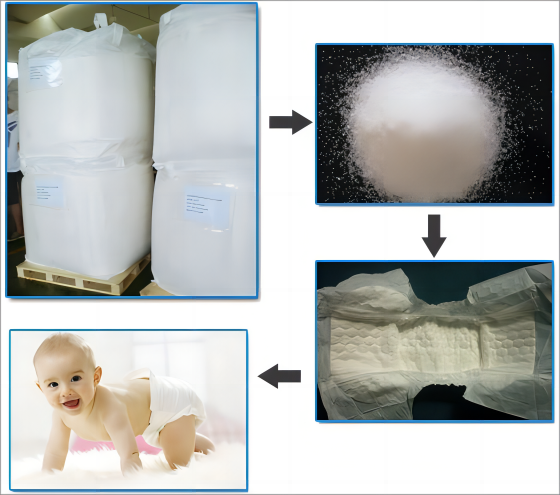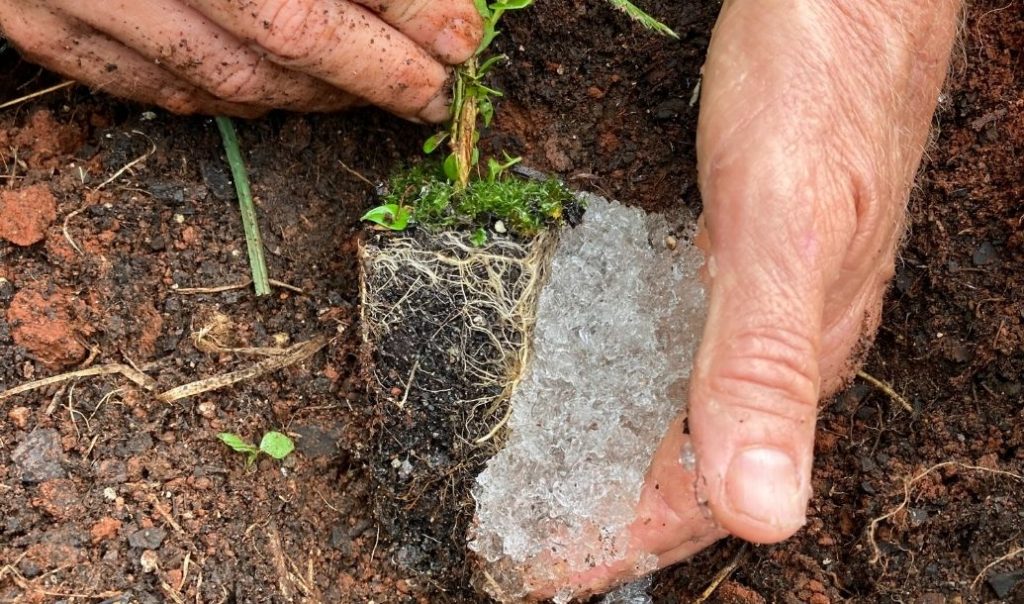What is sodium polyacrylate?
Sodium polyacrylate is an absorbent polymer that is used as an emulsion stabilizer, a hair fixative, a film former, skin conditioner, and a viscosity agent [1]. You will see them as the gel like crystals in baby diapers, which are makes them absorbent. In detergents it works as a chelating agent, which neutralizes the heavy metals in water & dirt so that the detergent can be more effective at cleaning. It is also used as a thickening agent because it can absorb and hold onto water molecules.
Sodium polyacrylate is a versatile absorbent polymer that finds applications in various industries. It serves as an emulsion stabilizer, aiding in the stabilization of emulsions in products like creams and lotions. Additionally, it is used as a hair fixative, helping to maintain hairstyles by providing a strong hold.
In skincare products, sodium polyacrylate acts as a film former and skin conditioner, creating a protective barrier on the skin while also enhancing its moisturization and softness. Its ability to absorb and hold onto water molecules makes it a valuable ingredient in formulations requiring viscosity control, contributing to the desired thickness and texture of the product.
One of its notable uses is in baby diapers, where it is present as gel-like crystals. These crystals have high absorbency, making diapers efficient in absorbing and retaining moisture, keeping babies dry and comfortable.
In detergents, sodium polyacrylate serves as a chelating agent, which means it can bind and neutralize heavy metals present in water and dirt. This action helps to enhance the effectiveness of the detergent in cleaning tasks by preventing the heavy metals from interfering with the cleaning agents.
Overall, sodium polyacrylate’s multifunctional properties make it a valuable component in a wide range of products across industries, contributing to their performance and user experience.
What products is sodium polyacrylate in?
Sodium polyacrylate is common in diapers, dish and laundry detergents, stain removers, bleach products & shower cleaners.
Sodium polyacrylate is a widely used ingredient found in a variety of products across different categories. It can be commonly found in:
Diapers:

In modern diaper technology, sodium polyacrylate is indispensable. Its superabsorbent nature allows diapers to efficiently absorb and retain large volumes of liquid, ensuring a dry and comfortable experience for infants and young children. This not only provides convenience for parents but also enhances the overall well-being of the child.
Adult Incontinence Products:
Similarly, sodium polyacrylate is used in adult incontinence products like pads and undergarments. These items benefit from the polymer’s quick absorption and moisture-locking abilities, offering discretion and comfort to individuals dealing with incontinence.
Feminine Hygiene Items:

Menstrual pads and tampons often incorporate sodium polyacrylate to boost absorbency. This helps manage menstrual fluid effectively, contributing to a sense of security and comfort during menstrual cycles.
Apart from hygiene products, sodium polyacrylate also plays a crucial role in agriculture and horticulture by addressing water management challenges:
Water Retention in Soil:

When integrated into soil, sodium polyacrylate acts as a water-absorbing reservoir, storing moisture in the root zone of plants. This leads to reduced irrigation frequency and is particularly beneficial in water-scarce areas, ensuring plants receive adequate moisture for growth.
Environmental Impact and Sustainability:
While sodium polyacrylate offers water-saving benefits in agriculture, its disposal and potential pollution are environmental concerns. Balancing its advantages with sustainability considerations is crucial for responsible usage.
Medical and Industrial Applications:
In the medical field, sodium polyacrylate’s high absorbency is utilized in wound care products and medical dressings. Industrial applications include areas like food packaging and oil recovery, where effective moisture management is essential.
Safety Considerations:
Proper handling, storage, and disposal practices are vital for ensuring the safe use of sodium polyacrylate across industries. Understanding potential risks and implementing safety measures are crucial steps in mitigating associated hazards.
Dish and Laundry Detergents: In detergents, sodium polyacrylate functions as a chelating agent, aiding in the removal of heavy metals from water and dirt, thereby improving the detergent’s cleaning efficiency.
Stain Removers: Some stain removers utilize sodium polyacrylate due to its absorbent properties, which assist in lifting and containing stains for easier removal.
Bleach Products: It can also be found in bleach products, where it contributes to the product’s thickening and stabilizing properties.
Shower Cleaners: Sodium polyacrylate may be present in shower cleaners, playing a role in enhancing their cleaning performance.
Overall, sodium polyacrylate’s versatility and effectiveness make it a common ingredient in a range of household and personal care products designed for absorbency, cleaning, and maintenance purposes.
How to tell if a product has sodium polyacrylate?
To determine if a product contains sodium polyacrylate, you can check the ingredients label for various synonyms and terms associated with it. These may include:
- Sodium salt polyacrylic acid
- 2-propenoic acid, homopolymer, sodium salt
- Acrylic acid homopolymer sodium salt
- Homopolymer sodium salt 2-propenoic acid
- Polyacrylic acid, sodium salt
- Propenoic acid, sodium carbonate polymer
- Sodium polyacrylate
- Sodium salt 2-propenoic acid, homopolymer

